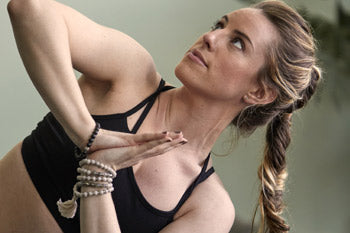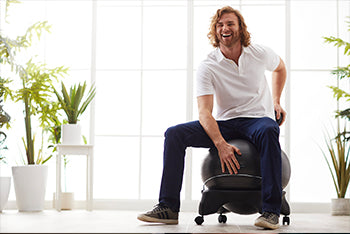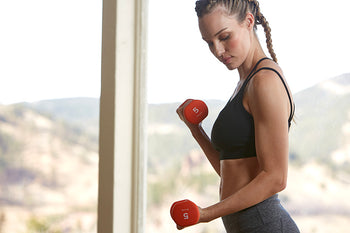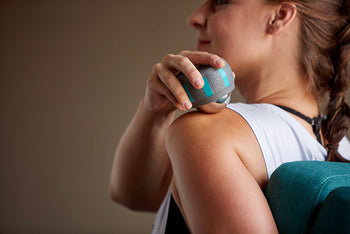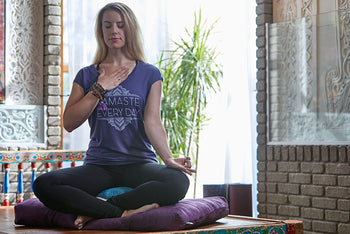In the past few years, though, a shift has occurred in the diversity reflected in these images and in the studios themselves, mostly as a result of yogis speaking up and forming organizations that support inclusivity. These days I see pictures of diverse yogis in my Facebook feed and a few publications, yoga clothing comes in more diverse sizes, and discussion about body image and inclusivity graces the venues of conferences. The primary organization behind this profound shift is the Yoga and Body Image Coalition. The members of this coalition have created an active conversation about body image and diversity in yoga while challenging commodification and celebrity within its culture. They have promoted the use of vastly more varied images of bodies in the media.
The Yoga and Body Image Coalition was founded by sociologist Melanie Klein and yoga teacher Gigi Yogini (Brigitte Kouba) in January 2014. Already deep into their own yoga practices, they each began exploring their own discomfort and incongruence with the image projected with the yoga community. Kouba started a blog called YOGAudacious, in which she wrote about women “who overcame [their] fear and self-limiting beliefs to get on a yoga mat and connect with [their] body and breath.” Klein wrote an article called “Yoga, Body Image and Feminism” for Elephant Journal in 2010, and in 2011 she began planning an anthology called Yoga and Body Image with Anna Guest-Jelley, a book they published in Fall 2014.
“Ultimately, the book and the coalition are fueled by the desire to make consistent yoga practice, with its transformative qualities, a safe and accessible tool in facilitating a healthy body image for every body,” Klein noted in an October 2015 Yoga International article. Joined by other educators, yogis, and scholars, the members combined ideas, perspectives, and talents to promote and display diversity in yoga. They wrote articles and blogs, spoke on podcasts and at conferences, taught classes, and facilitated discussions. In the summer of 2014, Klein and Yogini, along with founding members Dianne Bondy and Dana Smith, sat on a panel called “The Practice of Leadership” with representatives from Lululemon and Yoga Journal at the Yoga Journal conference in San Diego.
“We sat down and talked to them about body image and contemporary body politics, and why the imagery that they were creating and the way in which they were writing about yoga excluded and marginalized most people in the population, and was actually something that deterred people from coming to the mat,” says Klein. The coalition members said the companies’ content “was actually recycling and reinforcing a lot of the toxic messages of the larger culture.”
“We’ve not only challenged and called companies and organizations out on the lack of diversity, but we’ve created our own media content,” says Klein. We’ve made a point to showcase diversity in terms of every aspect of humanity, from age to size, race and ethnicity to sexual orientation to gender identity, to class, ability—we made sure we’ve covered all of that in the writers we publish, the yogis we interview, and the images we create to show everyone what a yogi looks like, and people have been excited and supportive.”
The “What a Yogi Looks Like” media series created by the Yoga and Body Image Coalition is centered on “shedding light on those not gracing the covers of Yoga Journal and supporting conscious community and solidarity,” says Klein. Another tool that has directly involved the community has been t-shirt sales. The coalition sells three: “This is what a yogi looks like,” “#loveyourbody is more than a hashtag,” and “Every body is a yoga body.” People buy the shirts, take photos of themselves, and post them on social media to help spread the message and fund the coalition, which is completely grassroots and volunteer based.
Some companies and publications are taking note of the call for diversity: Yoga International invited the coalition to help change the magazine’s content and images, and they began photographing a broader range of yogis and replacing their stock photos. The magazine has helped publicize the coalition’s #whatayogilookslike media series. In addition, Gaiam, in a move to feature more diversity in their new Spring line and offer larger sizes, asked Klein for names of yogis they might use as models.
“People are so hungry for these images, they’re so grateful for this kind of representation. People feel inspired and relieved to finally see some change, to see some diversity…We’ve had an unbelievable amount of support and enthusiasm,” notes Klein.
In the last few years, new organizations like Accessible Yoga, the Yoga Service Council, Green Tree Yoga, and People’s Yoga have emerged to contribute to new ways of teaching and sharing yoga. Individuals have created new teacher trainings, including Dianne Bondy’s Yoga for All, Anna Guest-Jelley’s Curvy Yoga, Tina Veers Yoga for Round Bodies’, and Amber Karnes’ Body Positive Yoga. There are Accessible Yoga and Yoga Service conferences. “There has been a wonderful snowball effect,” says Klein.
“We’ve seen changes on the larger scale in terms of the organization and media representation, we’ve seen change in terms of the kind of trainings offered as well as your standard training that now includes new types of information and new modules.” More studios owners are working to make yoga spaces accessible, inclusive, and equitable adds Klein. “We’ve seen that translated into the kinds of classes offered, the way that the space is designed, things that the studio or community takes on. We really have seen it on every level of yoga.”
The coalition continues to plan new media series, events, and projects. Bondy and Klein represented the coalition at the Yoga Service Council this May and will be part of the Accessible Yoga conference in Santa Barbara this fall. They plan to have events, free panel discussions in communities, and a variety of social media campaigns with an eye on diversifying yoga imagery. The “sea change” they helped instigate is carrying them along, and the conversation continues to spread.
These days, a yoga student is far more likely than I was 15 years ago to find a class, in her community or online, where diverse people are welcome. If you want to join or follow the conversation on body image and diversity in yoga, visit the coalition’s website or look for an event in your area.

